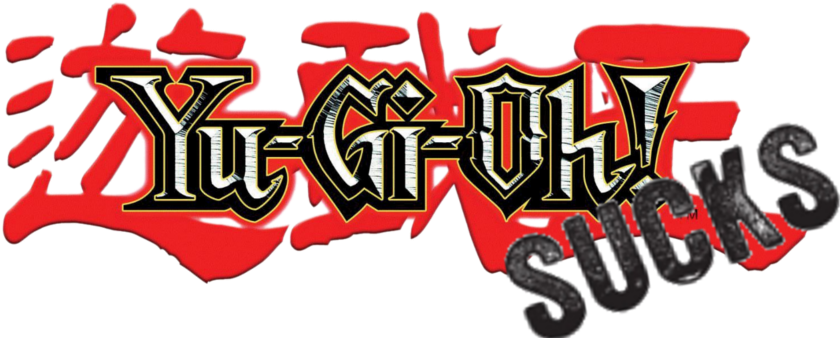Widely considered one of the most despicable decks to play against is Exodia FTK. I was never particularly irritated by it, but I can relate to those who are. With the number of people unhappy with Exodia, it seemed this was an excellent opportunity to highlight one of the downfalls of Yu-Gi-Oh. There are several variants, but the general strategy is always the same: draw through your entire deck in the first turn (or quickly as possible) and automatically win by the effect of Exodia. Losing before your first turn is never fun, and there will be more about that in future posts, but a lesson is to be learned from this particular type of FTK. This post aims to analyze what makes such a deck possible, and speculates on how to retract the mistakes that led up to it, if possible.
Long ago, drawing cards was quite common and not broken. Neither Pot of Greed nor Cyber Jar was banned. The problem arose with the dominance of hand control decks, and a drive to ensure success of such decks, or the complaints of players running these decks about "broken locks". Hand control becomes much more potent when there are no options to recover, so no-cost cards like Pot of Greed and Cyber Jar were banned and haven't been seen since. Because of their popularity, Konami has re-released a number of cards with the same effect, each with some drawback, cost, or theme requirement attached. In order to accommodate a variety of decks, many different variants were printed, and thus the problem was created.
To be clear, if such drawing cards were re-introduced into the FTK-centric meta today, they would not balance the meta. They would only increase the likelihood of any given player winning by going first, and not just Exodia. I suppose that type of competition is exactly what Konami wants, so it's a surprise they haven't unbanned it already, but it's probably because Exodia doesn't involve any newly released cards. A workable solution, in my humble opinion, would be to ban all the themed/restricted drawing variants and set Pot of Greed back to one-per-deck; this would mean everybody has that same drawing card, and at one-per-deck it's insufficient to cycle through the entire deck as will be demonstrated below. Pot of Greed was never broken, and setting it at 2 will do no more harm than having Dark Armed Dragon or Judgment Dragon at 1 (oh wait...).
As an incidental side effect, a few creative early adopters found a way to capitalize on this. Each card had some drawback, some bound to a certain type of deck. But, they found, with so many different drawing effects, all spells, if someone could design a deck to support all of the drawing spells instead of a monster theme, with some luck, they could cycle through an entire deck. The first I saw, several years ago, involved Broken/Golden Bamboo Sword, Royal Magical Library, and endless deck thinning spells. Other variants tend to involve some combination of Trade In, Destiny Draw, Alure of Darkness, Cards of Consonance, or Super Rejuvenation, and the corresponding light/dark/dragon/tuner/monsters to discard. Another interesting variant of this is Magical Explosion FTK; although it's a burn deck and not Exodia, the general strategy is the same and like Exodia it relies on the same fallacy made by Konami to function. When combined with general deck thinning, such as Upstart Goblin, One Day of Peace, and Dark World Dealings, this means it is quite possible to draw 35+ cards in a single turn.
Speaking from personal experience with several variations, both as someone who played against it and as someone who ran several variants of such decks, the deck is not consistent enough to be considered broken. Note I said it is not broken — That does not mean it doesn't make the game less fun; just that it can, in fact, lose quite often. It just doesn't matter what skill set or deck the opponent has. Like many other decks today, this is a fine example of Yu-Gi-Oh's degradation from strategy to a game of chance. The deck is difficult to perfect both in style and ratios, but once completed it requires less strategy than poker (no poker face necessary), and approximately the same degree of luck. Then, if it goes first there is a very real possibility of winning before the opponent has their first turn. If it has a bad hand, nearly any deck will be able to tear it to shreds within a minimal number of turns, and for the lucky victors the most convoluted and original strategy that will be of use is haste. In either case, the game is hardly enjoyable for the opponent, and only enjoyable for the troll, or the type who cares only about winning. Essentially, Exodia and Magical Explosion were proof of concept experiments to demonstrate Konami's reckless disregard for the playability of the game, which being ignored, grew out of control to the obnoxious Exodia FTK we know and hate today. The problem with the game, demonstrated perfectly by Exodia FTK, is that it has devolved from a game of skill to a game of luck.

No comments:
Post a Comment